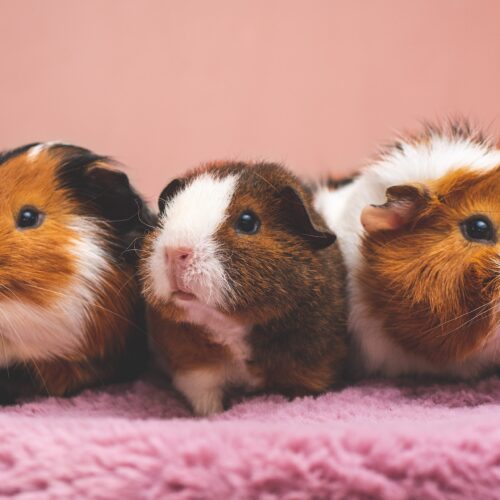It’s estimated that over 14 million tons of plastic finds its way into our oceans each year.
On top of this, an International Union for Conservation of Nature (IUCN) study found that plastic now makes up 80% of all marine debris found in surface waters and deep-sea sediments. It’s clear that this type of pollution has a major impact on marine life, but can it affect human beings too?
In this article we look at the main ways ocean pollution is impacting human health and society. We’ll also explain why finding a solution to this increasing global issue is so important.
How does ocean pollution affect human health?
Pollution is the leading environmental cause of disease in the world today. This is according to a 2020 article published in the medical journal Annals of Global Health. Indeed, it’s thought pollution contributes to as many as nine million premature deaths across the globe each year.
Often overlooked in comparison to air and land pollution, ocean pollution poses a wide range of serious threats to human health. But the nature and true scale of these health impacts are only starting to be understood.
What we do know is that microplastics are present in samples collected from all the world’s oceans, and when microplastics are present in seawater, they are also present in the animals that live in these oceans. This means that they are in the seafood we eat.
From an increased risk of developing dementia and other neurological conditions to cancer and even paralysis, as we explore in more detail below, it is through the food chain that ocean pollution is impacting human health most directly.
How does ocean pollution affect the food chain?
The way plastic enters the food chain is simple. Plastic waste dumped into the ocean slowly starts to break down into small pieces known as micro and nanoplastics. These tiny pieces then find their way into sea algae. Algae is then eaten by water fleas and other tiny carnivorous crustaceans. These small sea creatures are then consumed by fish and shellfish, which are then eaten by humans. In these three simple steps, plastic particles have entered the human food chain.
But why is this significant? Well, for starters, several chemicals used to create plastic are carcinogenic. They have also been known to cause neurological, immune, and reproductive disorders when ingested.
Pollutants found in the ocean are also thought to cause an increase in so-called ‘algal blooms’. These blooms have the potential to produce toxins that accumulate in seafood. When humans ingest these toxins, studies have shown cases of amnesia, paralysis, and even dementia increase.
How does ocean pollution affect climate change?
Ocean pollution doesn’t only impact wildlife and the humans that interact with it – it also poses a direct threat to Earth’s climate. This is because, as plastic starts to break down in the ocean, it releases greenhouse gases. The increased sunlight plastic items are subjected to in the ocean cause the material to release ethylene and methane at an increased rate. This means oceans are becoming more contaminated than landfills, and at a faster rate. Plastic breaks down into smaller pieces more rapidly, meaning they are entering the food chain sooner.
Additionally, research shows that microplastics affect the ability of marine microorganisms to absorb CO2 and release oxygen. Currently, it’s thought that at least 50% of Earth’s oxygen is produced by plankton in the ocean. However, the increasing presence of microplastics in its environments has started to affect the plankton’s ability to grow, reproduce and absorb carbon. For this reason, an increase in the amount of microplastics found in the ocean is further impacting plankton’s ability to remove CO2. In as little as 50 years, it is thought that this could create a vicious cycle in which our plastic-choked oceans cannot sustain as much natural life, which in turn means less CO2 is absorbed. Ultimately, this could mean our ability to reverse or even slow the progress of climate change is further hampered.
But ‘how does this directly impact humans?’, I hear you ask. Well, as less CO2 is absorbed by sea life, the effects of climate change could speed up. This could cause sea temperatures to rise and glaciers and permafrost to melt. Low-lying cities such as Tokyo, New York, Shanghai and Dhaka, could become flooded. Similarly, large populations of the world may be unable to grow the crops and foodstuffs. Legacy pollution from melted glaciers and permafrost, combined with the increased levels of CO2 in the atmosphere, could also see oceans become more acidic. This could result in eroded coral reefs and an increase in the toxins that are able to enter the food chain through human consumption of fish.
What we can do to stop ocean pollution
There are plenty of ways individuals can help when it comes to stopping, or at least slowing the rate of, ocean pollution. Check out our ‘How to stop plastic pollution in the ocean’ guide for a whole host of useful ideas. At the heart of all these actions is one thing – living more sustainably. From reducing the amount of single-use plastic you use to getting involved in beach and river clean ups, there are loads of ways you can contribute.
Here at Oceans, we are passionate about marine conservation and encouraging sustainable living. Our eco-friendly toilet rolls and kitchen roll use 100% paper packaging. While we know this isn’t the only solution to ocean pollution, every little helps.




